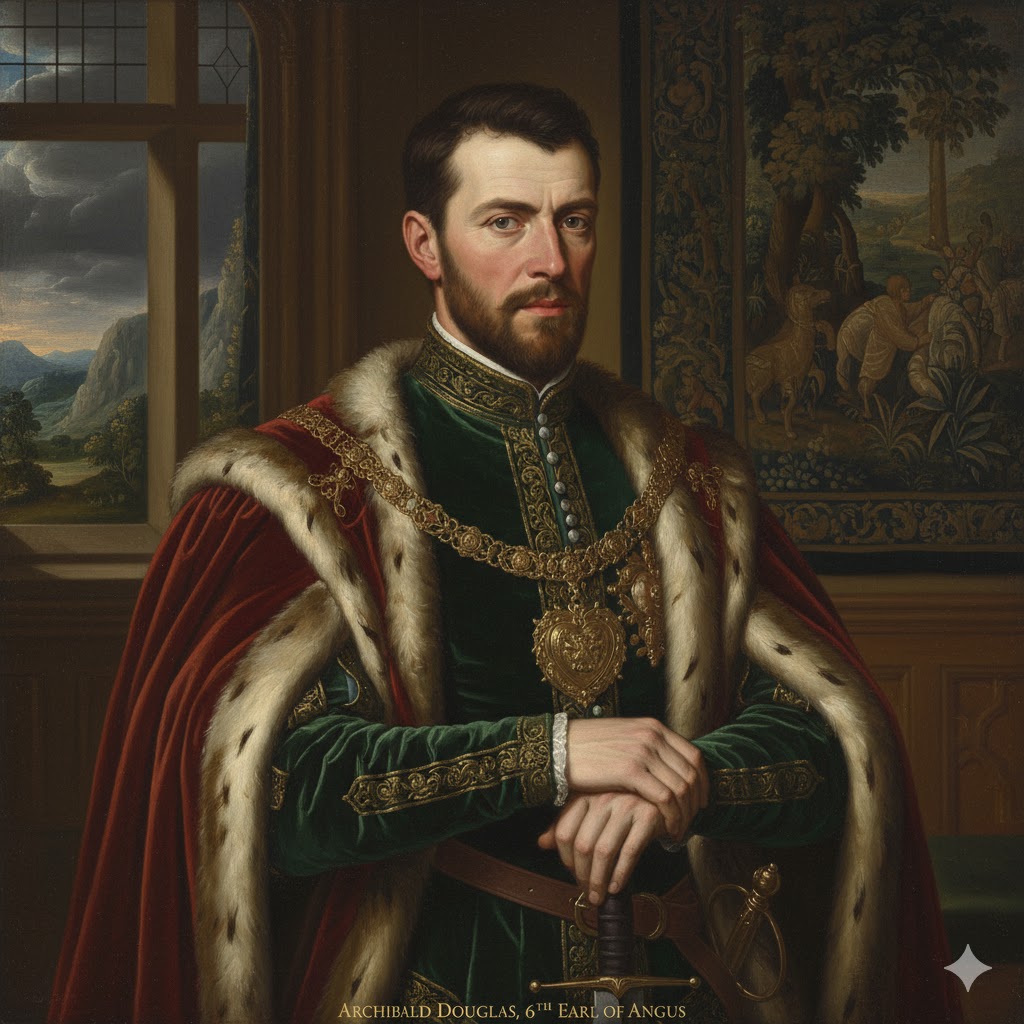
Archibald Douglas, the 6th Earl of Angus (c. 1489–1557), was a powerful and highly volatile Scottish nobleman whose life was defined by his relentless struggle for political dominance during the reigns of King James V and Mary, Queen of Scots.
He is best known for two key roles:
- The Second Husband of Margaret Tudor: In 1514, a year after his grandfather and her first husband (James IV) were killed at the Battle of Flodden, Angus married Margaret Tudor, the dowager Queen of Scotland and elder sister of King Henry VIII of England. This marriage placed him at the very center of Anglo-Scottish politics and immediately led to Margaret losing the Regency of her infant son, James V.
- The Stepfather and Jailer of James V: From 1525 to 1528, Angus effectively seized power and held the young King James V as a virtual prisoner. This period allowed the powerful Douglas family to fill the public offices of Scotland. James V grew to intensely hate his stepfather, and upon escaping in 1528, his first act was to issue a decree of forfeiture against Angus and the entire Douglas clan, forcing Angus into a long exile in England.
Key Facts and Significance
| Detail | Description |
| Birth & Death | Born around 1489 in Lanarkshire, Scotland; Died January 1557 at Tantallon Castle. |
| Marriages | He was married three times, most notably to Margaret Tudor (sister of Henry VIII). |
| Relationship to the Throne | His daughter with Margaret Tudor, Lady Margaret Douglas, married the Earl of Lennox and became the mother of Henry Stuart, Lord Darnley (the second husband of Mary, Queen of Scots). This makes Angus the great-grandfather of King James VI of Scotland (later James I of England). |
| Political Style | His career was often characterized as a “long struggle for power” where national interests were frequently subordinated to the interests and ambition of the Douglas family. |
| Later Years | After James V’s death in 1542, Angus returned to Scotland. While he occasionally sided with England, he also distinguished himself fighting for Scotland, notably leading the vanguard in the Scottish victory over the English at the Battle of Ancrum Moor in 1545. |
Export to Sheets
Angus was a quintessential “border lord” of the era—fiercely ambitious, constantly shifting alliances between England and Scotland, and a pivotal figure whose personal actions dramatically influenced the political landscape of 16th-century Scotland.
Discover more from WILLIAMS WRITINGS
Subscribe to get the latest posts sent to your email.




